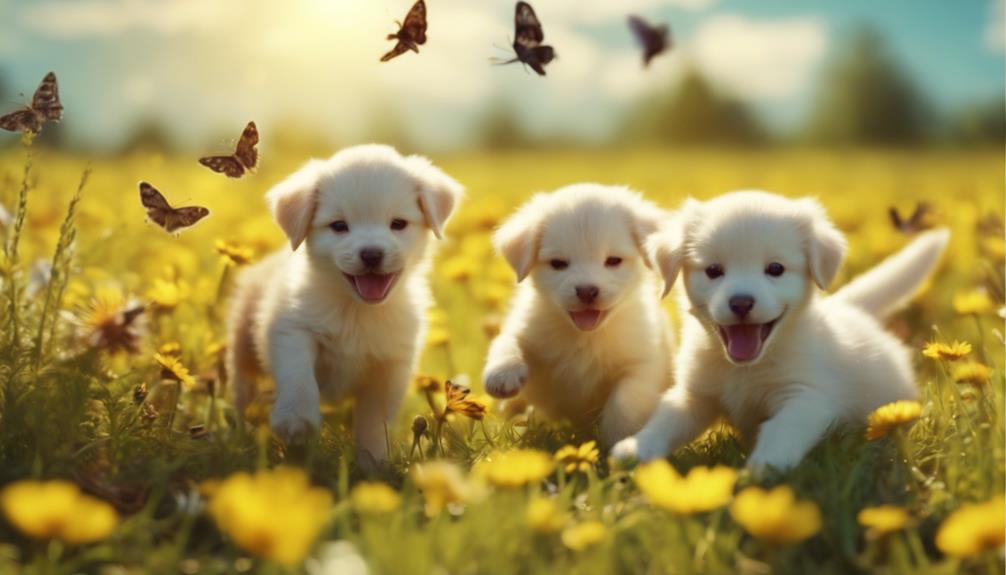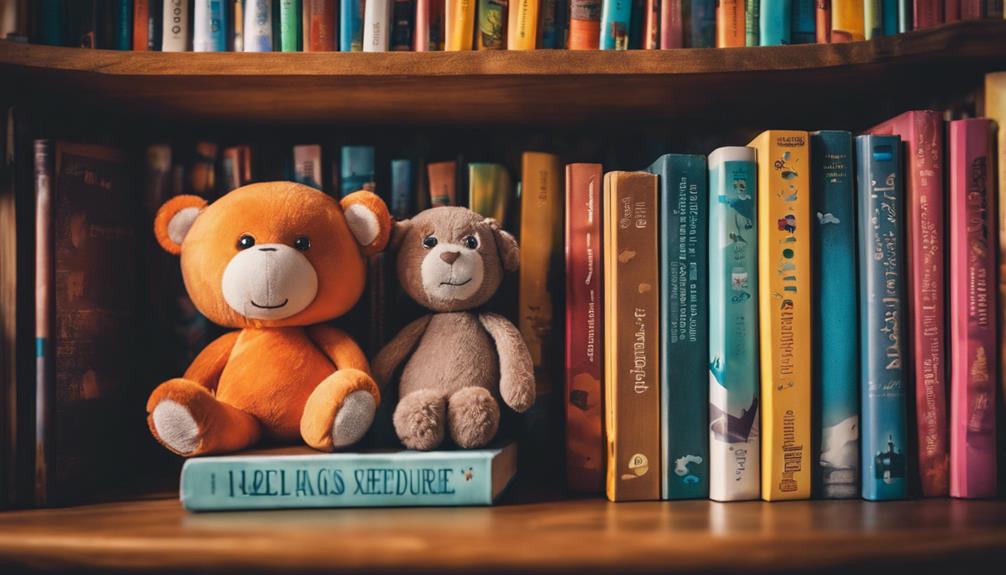Explore the enchanting world of baby animals for a fun-filled learning experience. Did you know baby deer are called fawns and are born with white spots for camouflage? Wildlife educator Jane Smith stresses knowing baby animal names fosters curiosity and appreciation for nature. Encourage empathy by understanding baby animals' distinct sounds, like meowing and barking. Engage in interactive activities such as the Baby Animal Matching Game to enhance memory and cognitive skills. Discover the world of baby animals' fascinating behaviors and unique characteristics to spark a passion for wildlife conservation. Further insights await on this intriguing journey.
Key Takeaways
- Discover unique baby animal names and sounds.
- Engage in interactive learning activities like matching games.
- Enjoy coloring pages featuring baby animals.
- Watch educational videos to learn about diverse species.
- Foster empathy and responsibility towards wildlife.
Fun Facts About Baby Animals
Exploring fascinating tidbits about baby animals can be both educational and entertaining for kids. Did you know that a baby deer is called a fawn? These adorable creatures are born with white spots that help them blend into the forest, keeping them safe from predators.
Baby elephants, known as calves, rely heavily on their trunk for various activities like feeding, drinking, and playing. It's truly fascinating to watch them use this versatile tool from a young age.
When it comes to baby foxes, they're called kits and are born blind, deaf, and toothless. They depend entirely on their mother for care and protection during the early stages of their life.
Additionally, baby crocodiles, known as hatchlings, communicate with each other and their mother while still in the egg through chirping sounds. This behavior showcases their unique bond even before they hatch.
On the other hand, baby chickens, or chicks, are remarkable in their own right. Within hours of hatching, they're already pecking for food, displaying their instinctual behaviors. These fun facts about baby animals provide a glimpse into the intriguing world of nature's little ones.
Names of Baby Animals
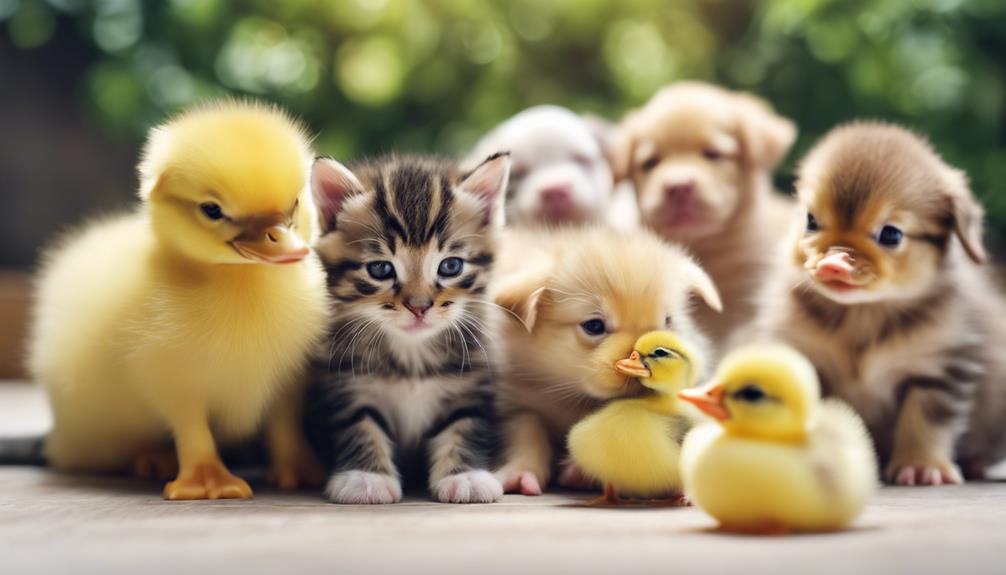
Discovering the names of baby animals can be an exciting journey for kids, introducing them to terms like 'fawn' for baby deer and 'kid' for baby goat. These unique names not only add a fun element to learning about animals but also help children expand their vocabulary and understanding of the animal kingdom.
For instance, terms like 'cub' for baby bear or 'piglet' for baby warthog often reflect characteristics or behaviors of the adult animals. By teaching children the names of baby animals, we can ignite their curiosity about different species and their life cycles, fostering a deeper appreciation for nature.
As children grasp these names, they begin to appreciate the diversity and beauty found in the natural world. According to wildlife educator Jane Smith, 'Learning the names of baby animals can be a gateway to exploring the wonders of nature and understanding the interconnectedness of all living creatures.'
Baby Animal Sounds
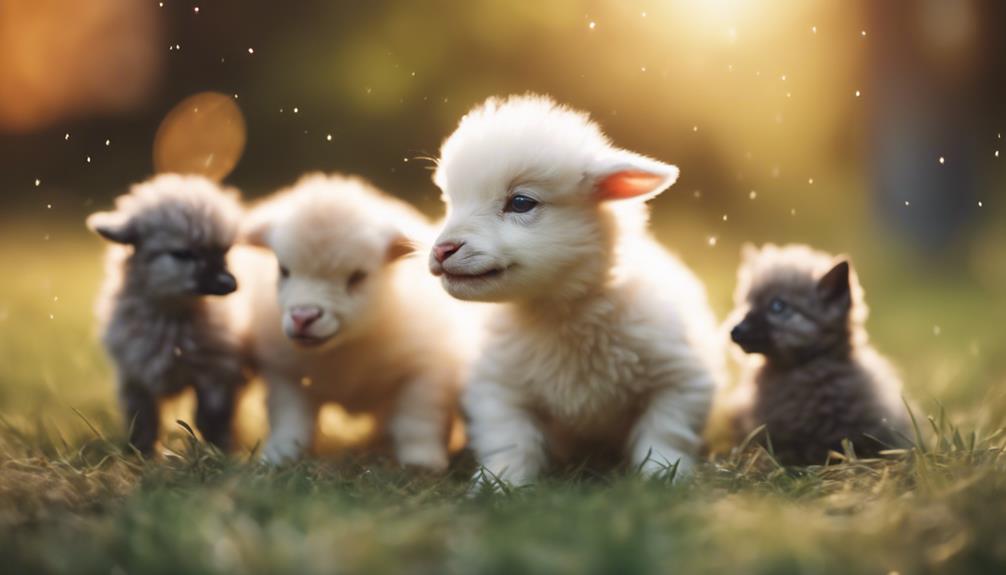
Listening to baby animals' unique sounds is a delightful way for kids to connect with the natural world and develop their observation skills. Baby animals use sounds like a kitten's meow or a puppy's bark to communicate with their families. By understanding these sounds, children can enhance their listening abilities and learn more about the animal kingdom. Some baby animals imitate their parents' vocalizations to grasp essential communication skills within their species. This knowledge not only aids in recognizing different animal sounds but also fosters empathy and understanding towards animals' needs. Encouraging kids to mimic these sounds can be a fun and educational activity that introduces them to the diverse ways animals communicate.
| Baby Animal | Sound | Communication |
|---|---|---|
| Kitten | Meow | Seeking attention |
| Puppy | Bark | Signaling playfulness |
| Duckling | Peep | Expressing contentment |
Cute Baby Animals to Learn About
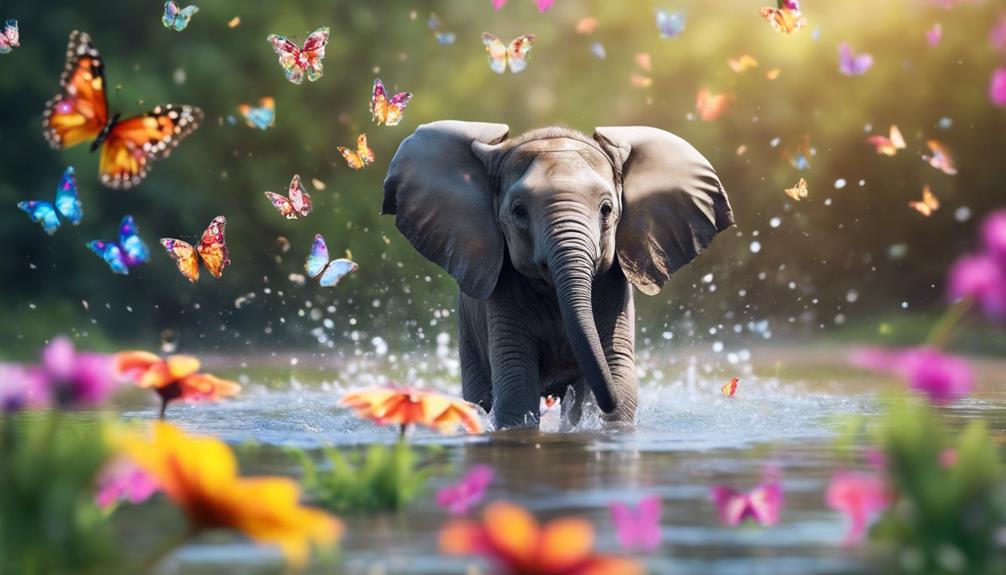
You can expand your knowledge of adorable baby animals by learning their unique names. For instance, a baby dog is called a puppy, and a baby cat is called a kitten. This distinction helps children understand the different names for baby animals, enhancing their vocabulary.
Additionally, knowing that a baby deer is a fawn and a baby goat is a kid can further enrich their understanding of animal terminology. It's fascinating to discover that a baby crane is a chick and a baby zebra is a colt, introducing kids to the diverse range of names for baby animals.
Furthermore, recognizing that a baby bear is a cub and a baby warthog is a piglet expands their knowledge of baby animal terms. Understanding that a baby rhinoceros is a calf and a baby duck is a duckling allows children to identify and remember these unique monikers.
Learning these names not only educates kids about the animal kingdom but also instills a sense of curiosity and appreciation for the natural world.
Baby Animals in the Wild
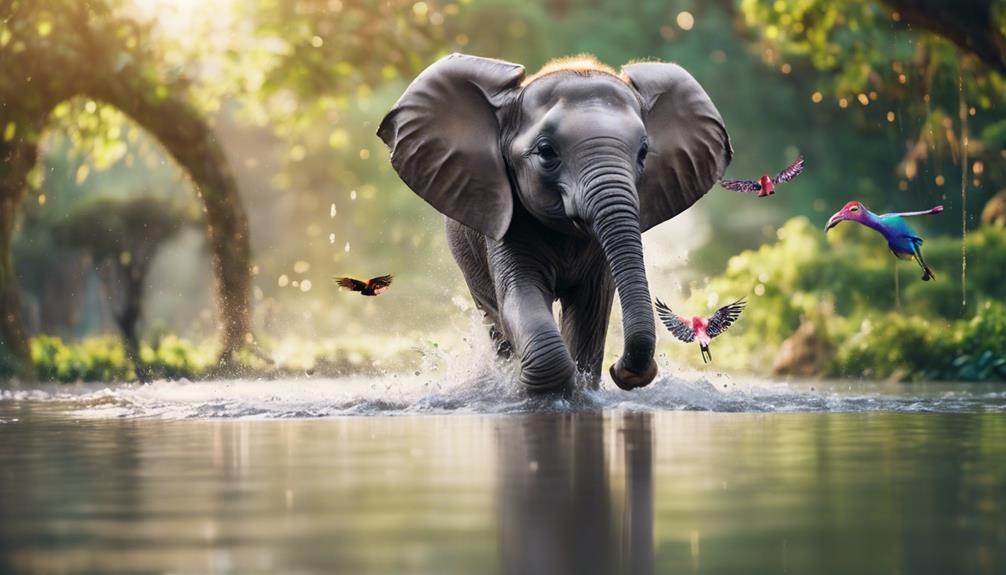
Wild baby animals are born vulnerable and depend on their parents for survival. Some, like fawns and calves, can walk soon after birth, while others require more time to develop.
Learning essential skills from their parents, these young animals face challenges in the wild that shape their ability to thrive in their environment.
Wild Baby Animal Facts
In the wild, baby animals exhibit fascinating behaviors and adaptations to survive and thrive in their natural habitats. Let's explore some intriguing facts about wild baby animals in the table below:
| Animal | Unique Fact |
|---|---|
| Kangaroos | Baby kangaroos, known as joeys, are born the size of a lima bean and complete their development in their mother's pouch. |
| Giraffes | Baby giraffes are already 6 feet tall at birth and can stand and walk within a few hours of being born. |
| Orangutans | Baby orangutans stay with their mothers for up to 7-8 years, learning essential survival skills and social behaviors. |
| Elephants | Baby elephants are born blind but can stand up within 20 minutes of birth and are nursed for several years by their mothers. |
| Cheetahs | Baby cheetahs have a distinct silver-gray mantle of fur on their back, called a mantle, which helps them blend into the grass and hide from predators. |
These wild baby animals showcase remarkable characteristics and behaviors that aid them in facing the challenges of their natural environments.
Adorable Animal Babies
Discover the endearing world of baby animals in the wild, where each species has its unique name for its adorable offspring. These names reflect the diversity and charm of wildlife's youngest members.
For instance, a baby deer is called a fawn, a baby goat is known as a kid, and a baby crane is referred to as a chick. The terminology varies across species, with baby zebras being colts, baby bears being cubs, and baby warthogs being piglets. Other examples include calves for baby rhinoceroses and ducklings for baby ducks.
Understanding these designations not only adds to your knowledge but also deepens your appreciation for the natural world. As one expert in wildlife education mentions, 'Learning about baby animals can be a fascinating way to engage children in the wonders of nature.'
Wildlife Nursery Behaviors
Baby animals in the wild display different nurturing behaviors to guarantee the survival and development of their young. Imprinting is a common behavior observed among baby animals, where they form strong attachments to their caregivers.
In many wildlife nurseries, designated 'babysitters' within the group take on the responsibility of watching over and protecting the young. For instance, lion cubs are often kept hidden in dens or nests by their mothers for protection from predators. These nurseries play an important role in the socialization and development of young animals in their natural habitats.
Additionally, baby animals learn essential survival skills from their parents or older members of the group. According to wildlife biologist Dr. Smith, 'Observing and mimicking their parents' behaviors is necessary for young animals to thrive in the wild.' Therefore, the nurturing behaviors exhibited in wildlife nurseries are fundamental for the well-being and future success of baby animals in the wild.
Farm Baby Animals
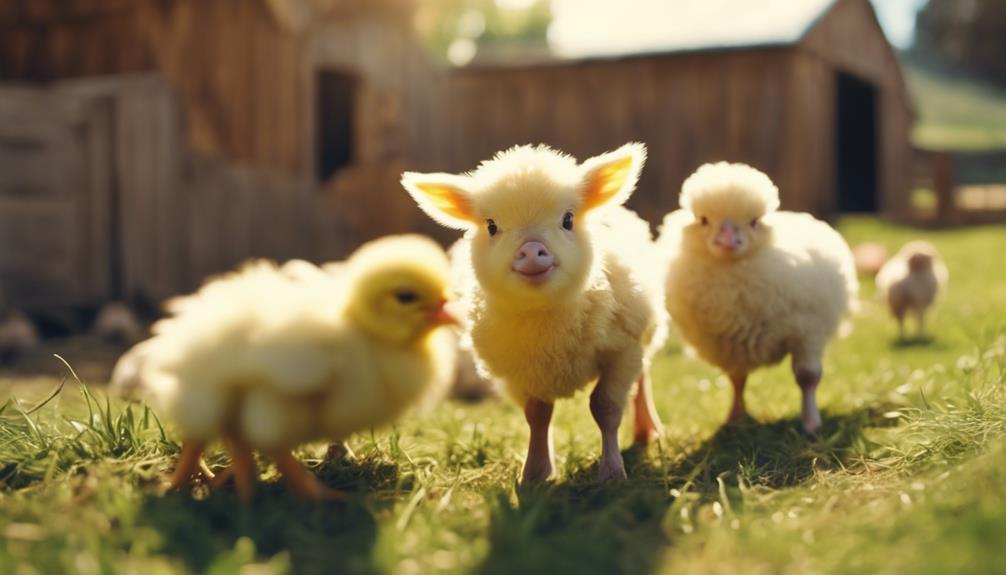
Farm baby animals are a delightful addition to any homestead. They're known for their distinct sounds, like the gentle 'moo' of a calf or the cheerful chirping of a chick.
When caring for these adorable creatures, remember to provide them with proper nutrition and a safe environment to thrive.
Farm Animal Sounds
When visiting a farm, you can listen to the various sounds made by the baby animals, each with its unique communication style. Baby cows, or calves, emit lowing sounds to communicate with their mothers and other herd members. These gentle creatures can start walking just a few hours after being born, showcasing their resilience from a young age.
Baby pigs, known as piglets, are highly intelligent and can even learn tricks and commands, often expressing themselves through grunts and squeals.
Baby chickens, or chicks, use different vocalizations to convey messages within their flock, creating a harmonious chatter.
Baby ducks, ducklings, have a special oil gland near their tail to keep their feathers waterproof and often emit soft quacks while exploring their surroundings.
Lastly, baby goats, known as kids, are playful and curious animals that communicate through bleats and calls, especially when they engage in their favorite activity of climbing and exploring the farm.
Animal Care Tips
Guarantee farm baby animals receive proper care by providing fresh water, good quality food, and maintaining clean living spaces. It's essential to guarantee the well-being of calves and piglets on the farm. Fresh water should be available at all times to keep them hydrated, while a balanced diet is important for their growth and development.
Additionally, clean and dry living spaces are necessary to prevent infections and diseases that can harm these young animals.
Proper shelter is also important for farm baby animals. It protects them from extreme weather conditions and provides a comfortable environment for them to thrive. Regular monitoring of their health and behavior is key to detecting any signs of illness or distress early on.
As stated by veterinarian Dr. Smith, 'Early detection of health issues can greatly improve the chances of successful treatment.'
Consulting with a veterinarian is recommended for guidance on vaccinations, deworming, and overall healthcare for farm baby animals. By following these care tips diligently, you can ensure the well-being and happiness of the young animals on your farm.
Baby Animal Matching Game
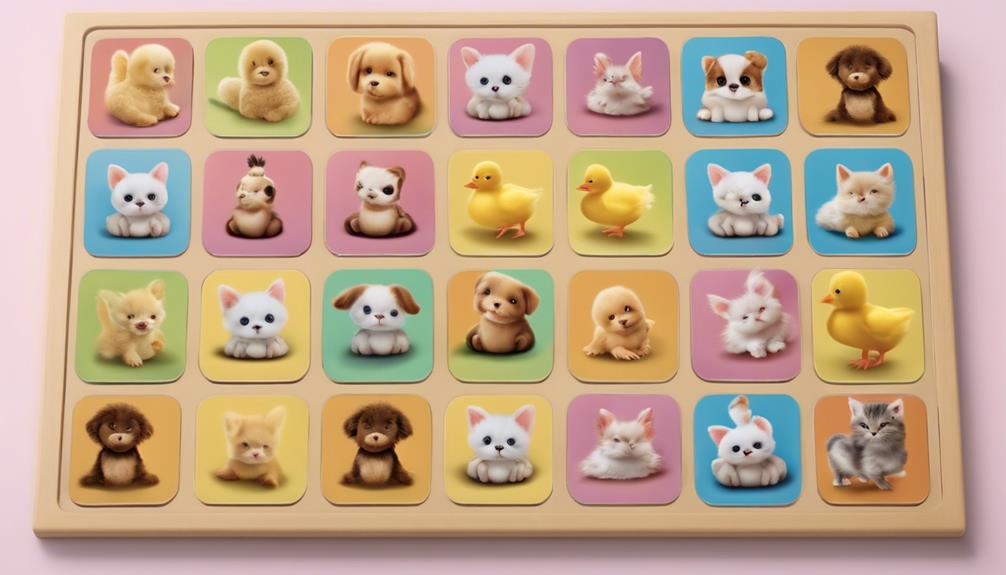
You can immerse yourself in the Baby Animal Matching Game to test your knowledge of baby animal names and their adult counterparts. This interactive game is not only enjoyable but also educational. By pairing baby animals like 'cub,' 'kitten,' and 'duckling' with their adult versions, you can improve memory and cognitive skills. Engaging in this activity will help you associate the unique names of baby animals with their corresponding adult names, enhancing your learning experience.
| Baby Animal | Adult Counterpart |
|---|---|
| Cub | Bear |
| Kitten | Cat |
| Duckling | Duck |
Matching these adorable baby animals with their adult counterparts provides a visual aid that aids in better retention and understanding. Explore the world of baby animals and learn their names through this entertaining and informative game. Get ready to sharpen your memory while having fun with these cute creatures!
Baby Animal Coloring Pages
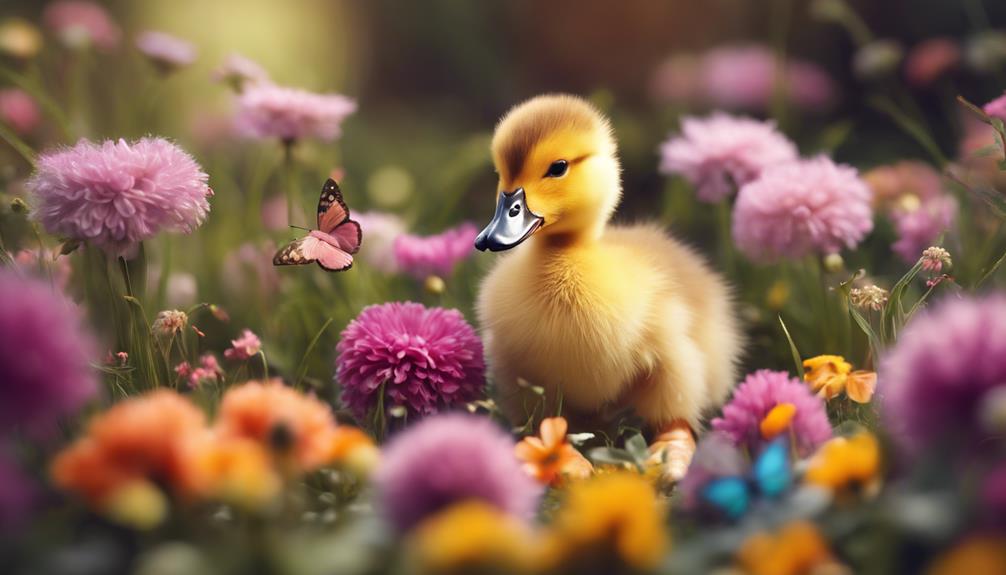
Explore the world of baby animals in a creative way by engaging with baby animal coloring pages. These pages serve as educational tools, allowing children to learn about various animal species and their offspring while enhancing their fine motor skills and hand-eye coordination.
By coloring in these pages, kids can have fun while also familiarizing themselves with the names of different baby animals. Additionally, this activity can ignite a passion for wildlife and nature conservation in young minds.
Numerous online platforms offer free printable baby animal coloring pages designed specifically for educational purposes, making it easily accessible for parents and teachers alike to incorporate them into children's learning experiences.
Baby Animal Videos for Kids
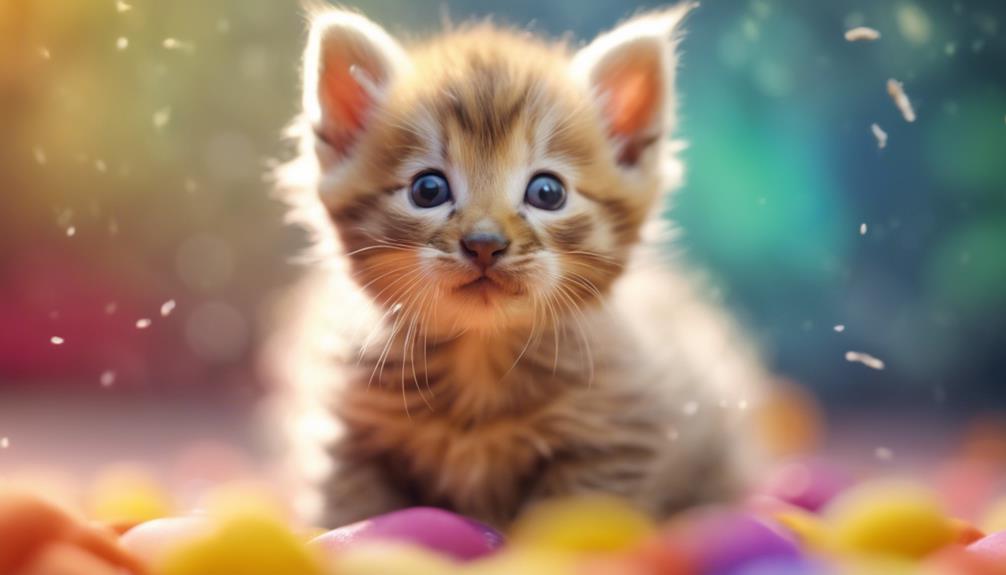
Discovering adorable baby animals through engaging videos is a wonderful way for kids to learn about different species and foster a love for wildlife. These videos offer a fun and educational experience that can spark curiosity and empathy in children.
Here are three reasons why baby animal videos are beneficial for kids:
- Educational Content: Baby animal videos provide a window into the animal kingdom, showcasing the diverse species and their behaviors. This exposure can help children expand their knowledge about wildlife in an entertaining manner.
- Development of Empathy: By observing the interactions and playful antics of baby animals, kids can develop empathy and compassion towards animals and nature. This emotional connection can instill a sense of responsibility towards caring for the environment.
- Engaging Learning Tool: Baby animal videos are designed to be child-friendly and age-appropriate, offering a safe and engaging platform for young kids to explore the wonders of the natural world. Watching these videos can be both entertaining and educational, making learning about animals a delightful experience for children.
Frequently Asked Questions
What Are Some Fun Facts About Baby Animals?
Let's chat about some cool facts about baby animals. They are often born with unique abilities and rely on their parents for guidance. Baby animals, like bears and wolverines, learn through play and imitation.
What Is the Baby Animal Called Game?
To play the "What Is the Baby Animal Called" game, you guess the name of the baby animal based on adult animal descriptions or pictures. It's a fun way for kids to learn and have a blast!
How Do You Teach Baby Animals for Kindergarten?
To teach kindergarten kids about baby animals, start with engaging activities like matching games and interactive storytelling. Use visual aids and online resources to make learning fun and immersive. Consider a field trip to a petting zoo for hands-on experience.
How Do Baby Animals Learn?
You learn by observing and mimicking parents, playing to develop skills, receiving direct instruction, trying things out, and repeating successful behaviors. Positive outcomes reinforce actions, while negative outcomes discourage them. This is how baby animals learn.
How Can I Help My Baby Learn Animals?
To help your baby learn animals, introduce them to books, toys, and real-life encounters. Use flashcards with baby animal images, sing songs about animals, visit zoos, and encourage mimicking sounds and movements. Learning becomes fun and interactive!
Conclusion
To sum up, the world of baby animals is a fascinating and educational one for children to explore. By learning about the different names, sounds, and habitats of baby animals, kids can gain a deeper understanding and appreciation for the natural world around them.
So, next time you see a baby animal, take a moment to observe and learn something new. Who knows what exciting discoveries await you in the world of baby animals!

